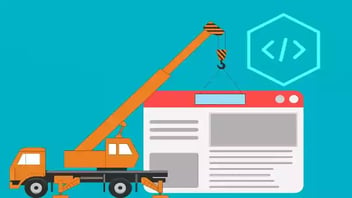Despite what you may have heard, the blog is not dead. It's experiencing a significant resurgence. And if you're looking to turn your company blog into a valuable source of revenue and clients, you're in the right place. Keep reading for all the information you need to know.


Blogging has become essential for B2B companies to reach their target audience effectively. It is a long-term investment that pays off well in the long run. However, creating blog posts that stand out and attract readers is essential to succeed. This is where our list of top characteristics of successful blog posts comes into play. We have categorized these characteristics into three categories, namely hook, content, and meta, to make it easier for you to understand and implement them.
Hook your potential customers.
In today's fast-paced world, people don't have time to read everything in-depth. They skim through content quickly, picking up only the most relevant information. This is why capturing their attention with the right elements is crucial. A headline 6-13 words long and incorporating relevant keywords is a great way to grab their attention. However, ensuring the headline accurately reflects the post's content is essential. Clickbait headlines may get clicks but also erode trust and alienate readers. So, avoid them at all costs and focus on crafting a good blog headline that accurately represents the content and piques the reader's interest. By doing so, you'll be able to attract more readers and keep them engaged with your blog posts.
Subheadings matter
Not only will your skimmers stop on a text that stands out by being in larger font, etc., but when it comes time for the search engines to read your pages, things tagged with header and subheader tags are given more weight. So pay as much attention to your headers and subheaders as you do to your titles!
Images, images, and more images
Incorporating images (in the right sizes and formats) into your blog posts is a great way to keep your readers engaged and interested in your content. Research has shown that articles with images receive 94% more views than those without, making it a powerful tool to increase your readership. Additionally, images can also play a significant role in your SEO efforts. A well-chosen featured image can appear above your post title on various platforms, including RSS readers, search engine results pages, and social media ads, and can significantly improve your click-through rates.
However, be careful not to overload your post with too many images, which can slow your page loading time and negatively impact your SEO. Instead, select one or two eye-catching images that relate to your topic and capture the attention of potential readers. With the right pictures, you can take your blog to the next level and attract more traffic to your site.
Posting a scintillating image, and then talking about marketing trends in the widget industry is clickbait, and your readers will abandon you as a huckster.
Content is king
Unique content matters in the blogging world. Search engines and SEO bots pay attention to how many places have similar sentences and word combinations, so be sure to make your posts, headlines, etc., as original as possible, and be sure your content is only posted on your blog (there are exceptions, such as reposting to Medium, but that's for another post).
When you post to social media, you must use original phrasing rather than simply repeating your title and headlines. Reword your title, change a few words, or reverse the word order to ensure the SEO bots and search engines see each post as original content. The links to the blog post are backlinks, which increase your SEO pull even more.
Be a maven
Mavens are the storehouses of knowledge for their industry. Everyone else looks to them when they have questions because they know this person will have the answers they need readily available. Use your blog to show the world that you're the maven for your industry, and you'll position yourself as a trusted source of information that people will return to again and again, especially as you post fresh content!
To truly establish yourself as a maven in your industry, it's essential to keep your content hyper-relevant to your target audience. Stay ahead of the curve by writing about how your company is adapting to changes in the widget industry and helping your readers solve their widget-related woes. By positioning yourself as a trusted widget source, you'll keep your readers returning for more and establish a loyal customer base.
Wrap it all up in a conclusion bow, and tie it off with a CTA
When the time is right, sign off. Let your readers know it's coming, then ease them into it with a summary of your salient points leading to your call-to-action.
Let the data you collected from A/B testing dictate details like the color of the CTA button, the wording on that button, etc. Remember to keep the conclusion relevant and concise and the call to action appropriate for its content. That way, you won't turn anybody off from hearing more of your message in the future.

There's nothing more meta than, well, meta.
Meta-data, that is. This covers everything from the metadata on your post (covered momentarily) to factors used by SEO bots and search engines to calculate the pull your post has. That helps determine where it will appear in organic search results. 70-80% of search engine users admit ignoring paid ads and focusing only on organic results. This makes the meta-information just as crucial as your content regarding increasing reach.
Meta descriptions
Do you know the summary of a webpage that is displayed under the URL in search results lists? Have you ever wondered where that comes from since you never see it when you open the link? It's called the Meta Description and is invisible to your readers' eyes once they hit your page. It is NOT, however, invisible to the search engine when it indexes your page. This is another example of where you can use original wording to summarize your blog posts, helping draw in readers and, at the same time, increasing your SEO pull.
Additional meta factors
We've already touched on a couple of factors that come into play when talking about metadata, starting with titles, headings, and subheads. On the backend, these lines of text are much more than simple lines. They have HTML tags that emphasize them when the SEO bots and search engines come indexing.
Additional factors to remember include that blog post length matters, with just over 1,000 words being the average length for long-form posts that get the most shares and links. Backlinks also matter; the more incoming links there are to a page, the better its SEO pull will be. So once you have a decent content store posted, start linking to your older posts. This has the additional benefit of keeping those older posts current and updated so your content doesn't get stale.
As you can see, many factors come into play when considering what makes a successful blog post. You need to keep in mind both the front-end content, as well as the back-end metadata. In doing so, you'll slowly (remember, this is a longer-term strategy) increase your pull and, therefore, your readership. An increased readership means increased reach and, from there, an increased customer base.













Leave a Comment